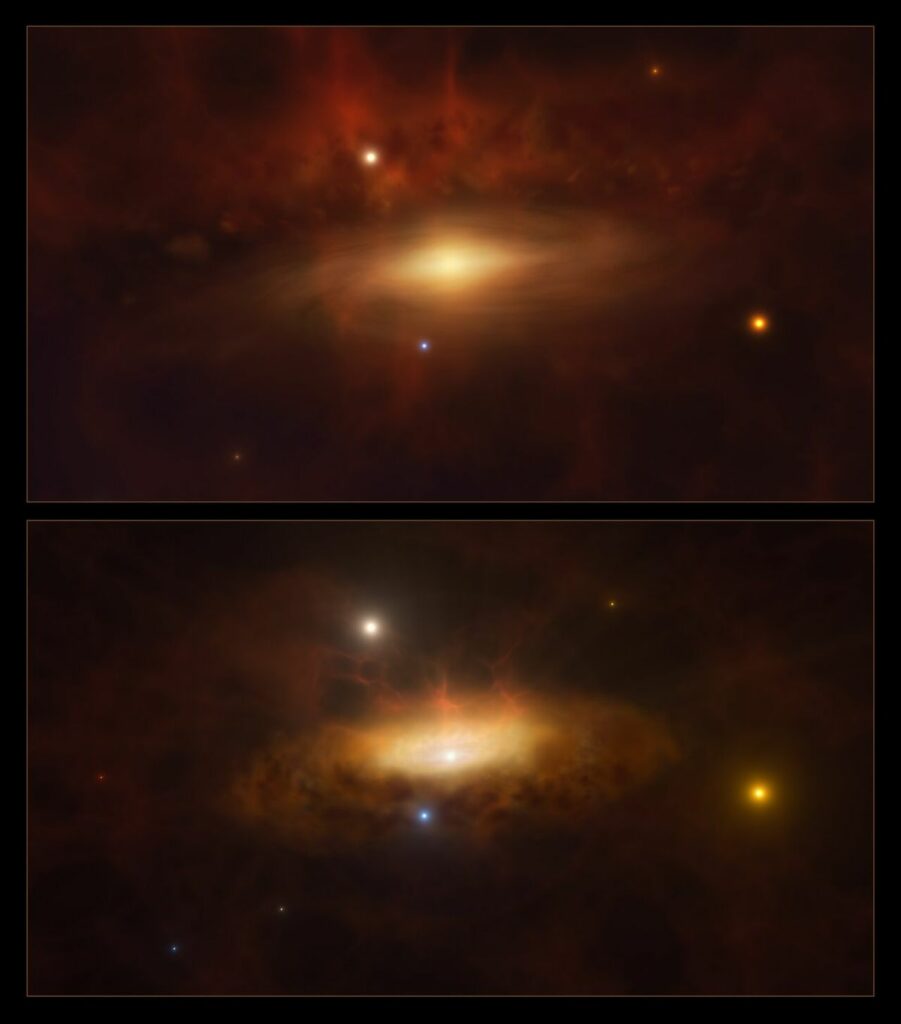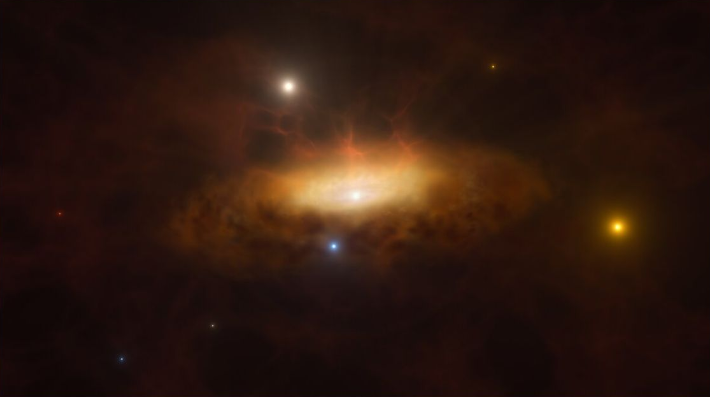There are signs that a colossal black hole could be becoming active in a neighboring galaxy.
The black hole’s eating behavior shows how these colossal beasts grow.
On December 2019, an Automated Survey Telescope known as Zwicky Transient Facility positioned at Palomar Mountain in California, observed a glaring flash coming from a galaxy in the Virgo constellation, 300 million light years away from Earth. This flare was uneven and at its peak reached a four year mark, and it is still present to this day. This has taken such a long time, which is quite rare for an event of this sort and is not easily explained within conventional astronomical classifications.
Paula Sánchez-Sáez, an astronomer at the European Southern Observatory in Germany, who first initiated the discovery, explained such a behavior had never been observed before. The researchers believed that the flare could be due to an Active Galactic Nucleus within the galaxy due to the awakening of a supermassive black hole that has fed on gas within the galaxy after a period of inactivity.
The heating of this gaseous material to extreme temperatures before its consequent central fall into the cosmic void produces visible light shows that can be registered by the Zwicky telescope. Should this theory be true, then St. Mary’s team led by Sánchez-Sáez would have recorded the first ever direct evidence of a black hole flipping from a quiescent phase to an active one, which they made public on June 18.

This black hole, which is one million times as massive as our Sun, has not been active in terms of emitting high energy radiation for at least the last twenty years. Lorena Hernández García, a co-author of the study from the Millennium Institute of Astrophysics in Chile, says that while astronomers have been monitoring this galaxy, SDSS1335+0728, for a long time, they have never seen a flare analogous to that of 2019 happening live.
Comparing the data collected by different telescopes before and after the 2019 event, the scientists have been able to establish that the light emission of the galaxy has increased dramatically in different bands, including the ultraviolet, optical, and infrared bands.
The four-year-long flare might indicate that a star that stumbled upon the black hole got too close and got ripped apart. Nevertheless, even the longest deaths by black holes take no more than a few hundred days at most. Researchers are still discovering the diverse rates at which black holes feed on the surrounding material, affecting the development of their host galaxies after millions of years.
However, the observed continuing high flaring in SDSS1335+0728 cannot be attributed to supernovas, which are nova explosions that occur when a star exhausts his nuclear fuel, and dies. Supernovas are said to last for days or a few months and astronomers always wonder where this mystical glow comes from.
”At the moment, with the available data, it is impossible to determine which of these scenarios is true,” said Sánchez-Sáez to The Guardian. “We have to remain vigilant with the source. ”
A paper describing these findings has been accepted for publication in the journal Astronomy & Astrophysics.
Do not forget to share your opinion with us to provide you with the best posts !




0 Comments